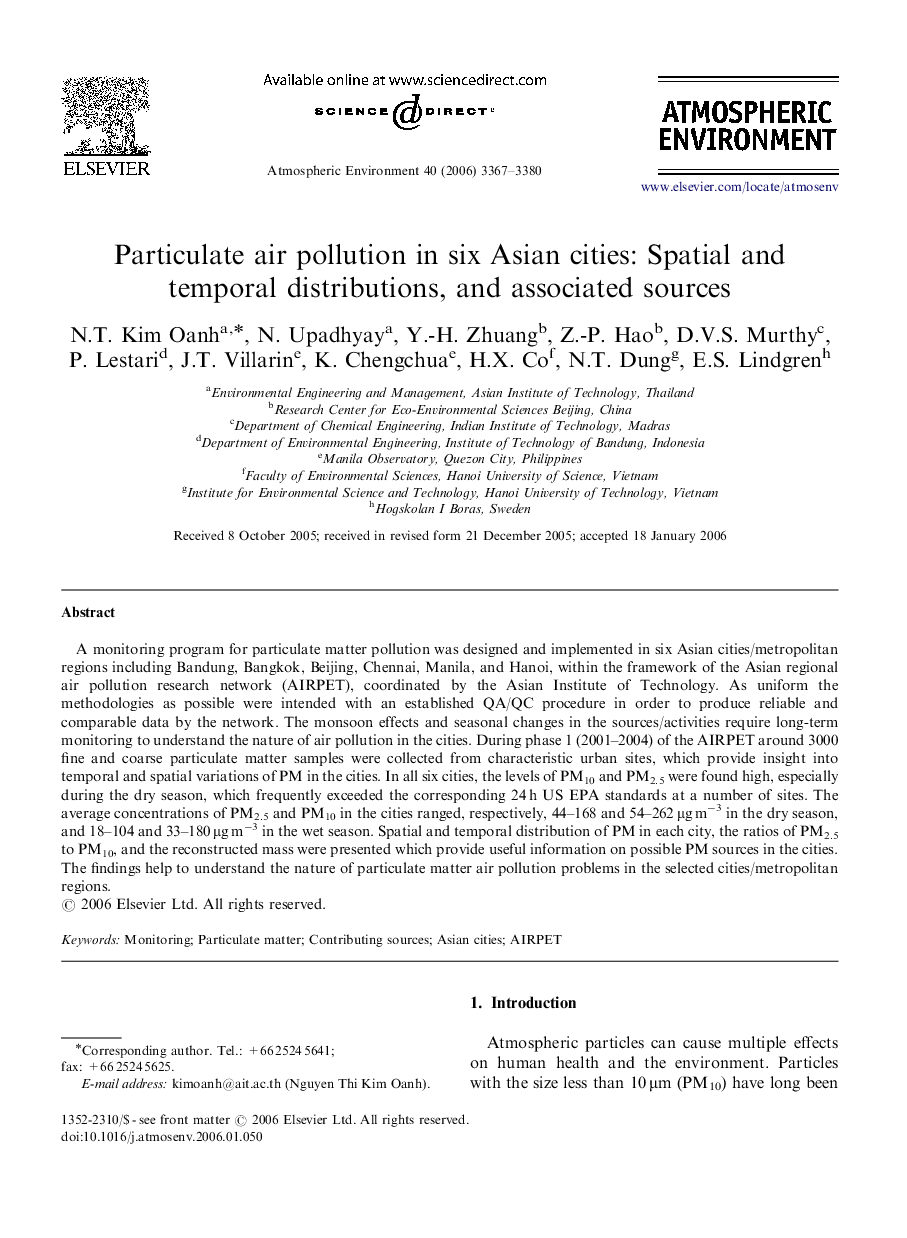| Article ID | Journal | Published Year | Pages | File Type |
|---|---|---|---|---|
| 4444837 | Atmospheric Environment | 2006 | 14 Pages |
A monitoring program for particulate matter pollution was designed and implemented in six Asian cities/metropolitan regions including Bandung, Bangkok, Beijing, Chennai, Manila, and Hanoi, within the framework of the Asian regional air pollution research network (AIRPET), coordinated by the Asian Institute of Technology. As uniform the methodologies as possible were intended with an established QA/QC procedure in order to produce reliable and comparable data by the network. The monsoon effects and seasonal changes in the sources/activities require long-term monitoring to understand the nature of air pollution in the cities. During phase 1 (2001–2004) of the AIRPET around 3000 fine and coarse particulate matter samples were collected from characteristic urban sites, which provide insight into temporal and spatial variations of PM in the cities. In all six cities, the levels of PM10 and PM2.5 were found high, especially during the dry season, which frequently exceeded the corresponding 24 h US EPA standards at a number of sites. The average concentrations of PM2.5 and PM10 in the cities ranged, respectively, 44–168 and 54–262 μg m−3 in the dry season, and 18–104 and 33–180 μg m−3 in the wet season. Spatial and temporal distribution of PM in each city, the ratios of PM2.5 to PM10, and the reconstructed mass were presented which provide useful information on possible PM sources in the cities. The findings help to understand the nature of particulate matter air pollution problems in the selected cities/metropolitan regions.
